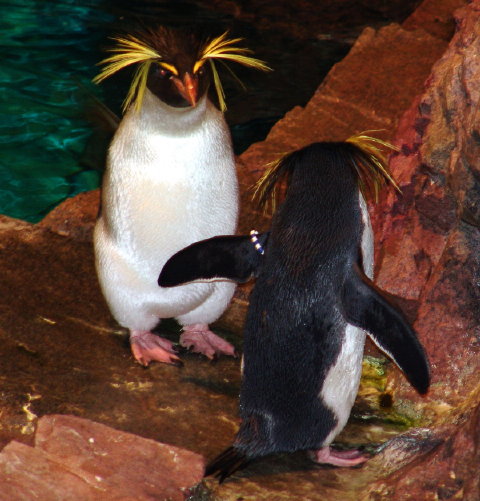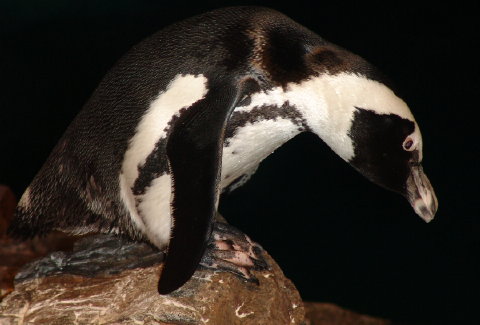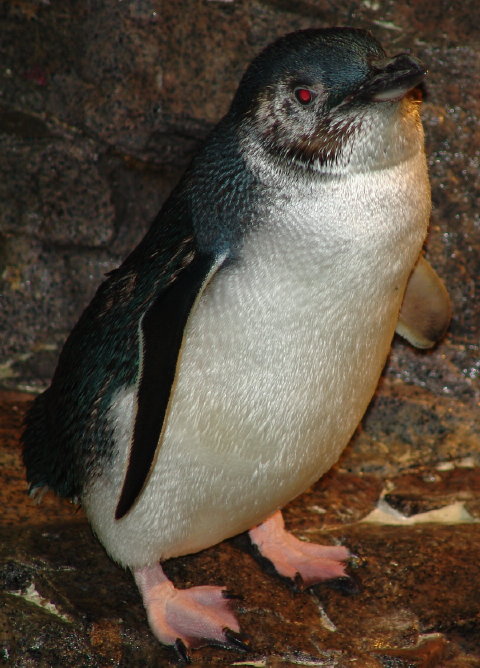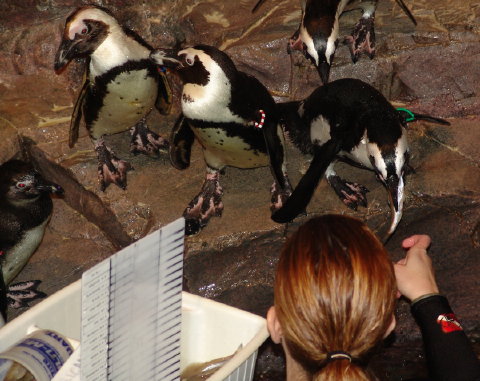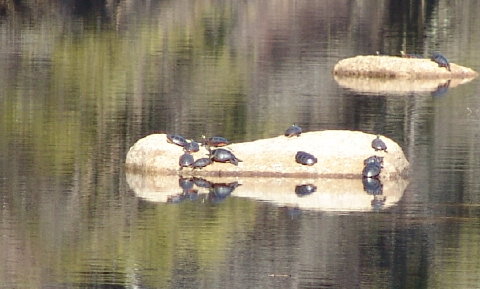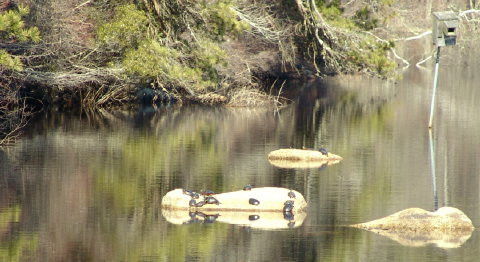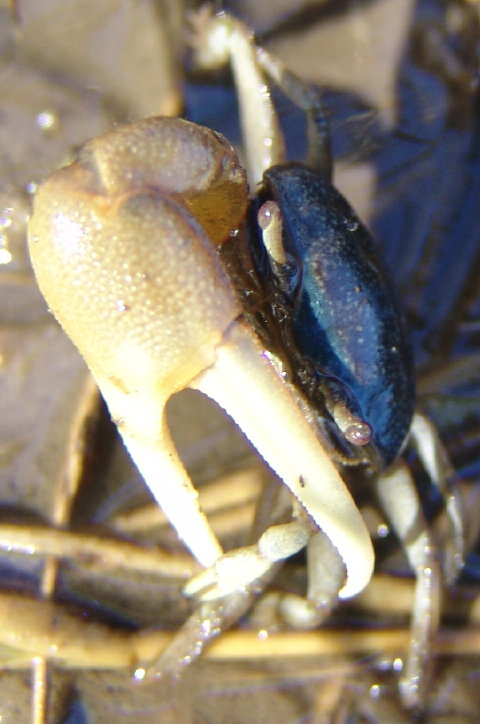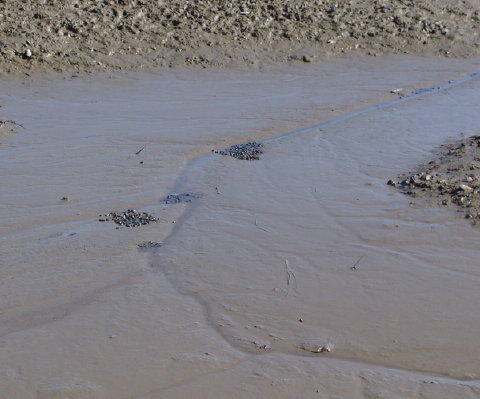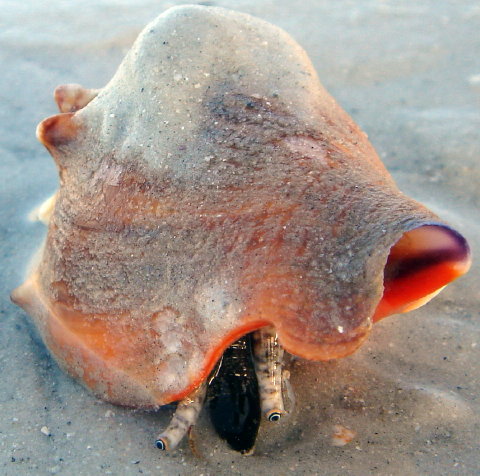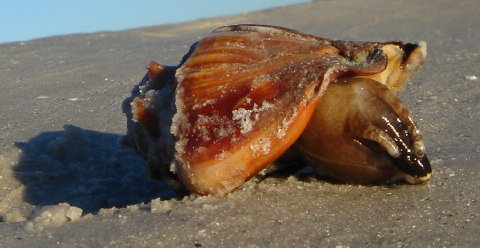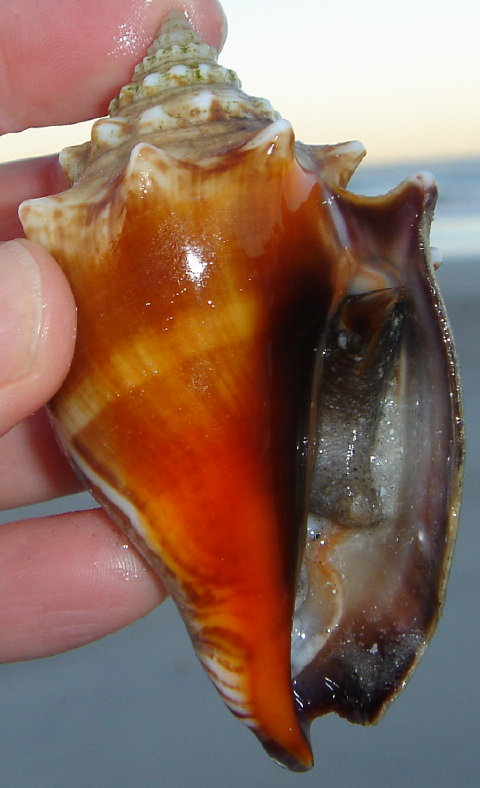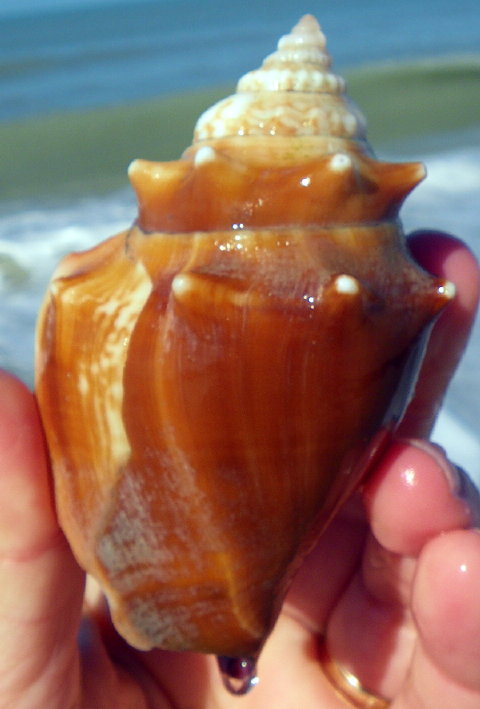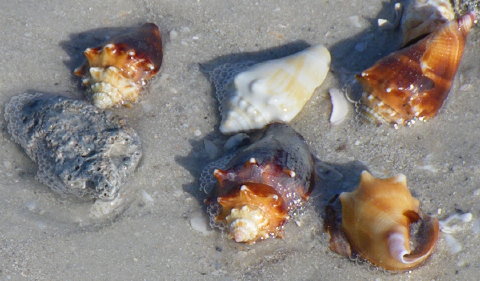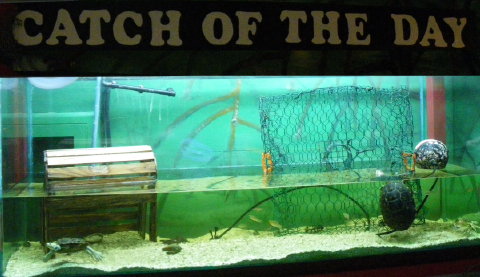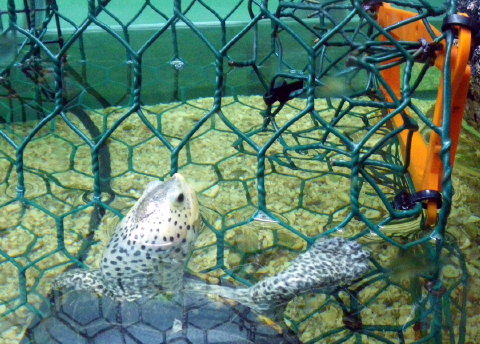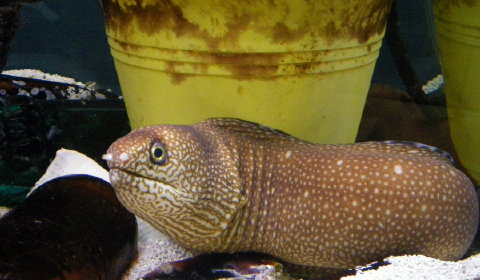Rockhopper Penguin (Eudyptes chrysocome) at NEAqÂ
The New England Aquarium (NEAq) in Boston offers a delightful display of penguins on its main level surrounding the large ocean tank. Rockhopper penguins pictured above seem a tad theatrical with their gaudy golden tuffs and eye brows.Â
African Penguin (Spheniscus demersus) at NEAq
African penguins bellow raucous trumpet calls that drown out the buzz of visitors as they crowd around the exhibit.
Little Blue Penguin (Eudyptula minor) at NEAq
The Turtle Journal’s favorite species is the little blue penguin. They appear like tiny juveniles (but are full grown adults) and they lack the outlandish traits of the others. Still, they’re simply adorable to our eyes.
Dueling Trombones in the Penguin Exhibit at NEAq
As noon approaches, penguins get restless and bellow powerful trombone blasts that capture the rapt attention of visitors and staff.
African Penguins Receive Reward for Outstanding Performance
As the penguin performance winds down, staff climb into the exhibit to offer a fish treat.
Oops! Little Blue Penguin Forgot to Duck, So to Speak
Of course, there’s one downside to treats. To coin a phrase, what goes in, must come out. In the case of our favorite little blue penguin, it looks as though he forgot to duck!
For more information about penguins, check out Penguin facts on the New England Aquarium web site.
